

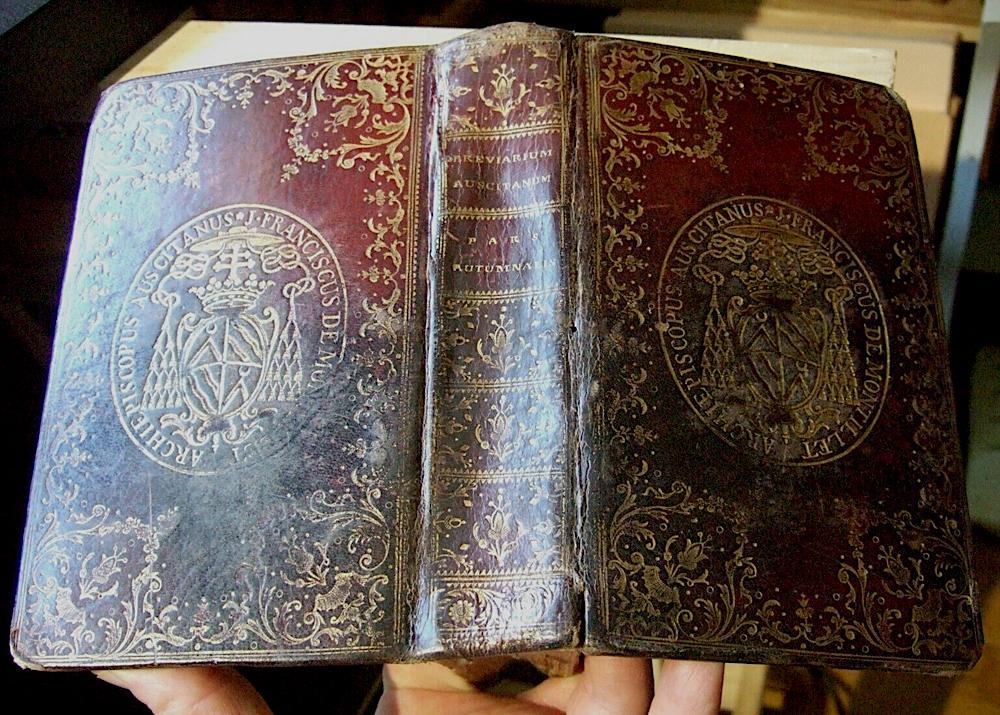
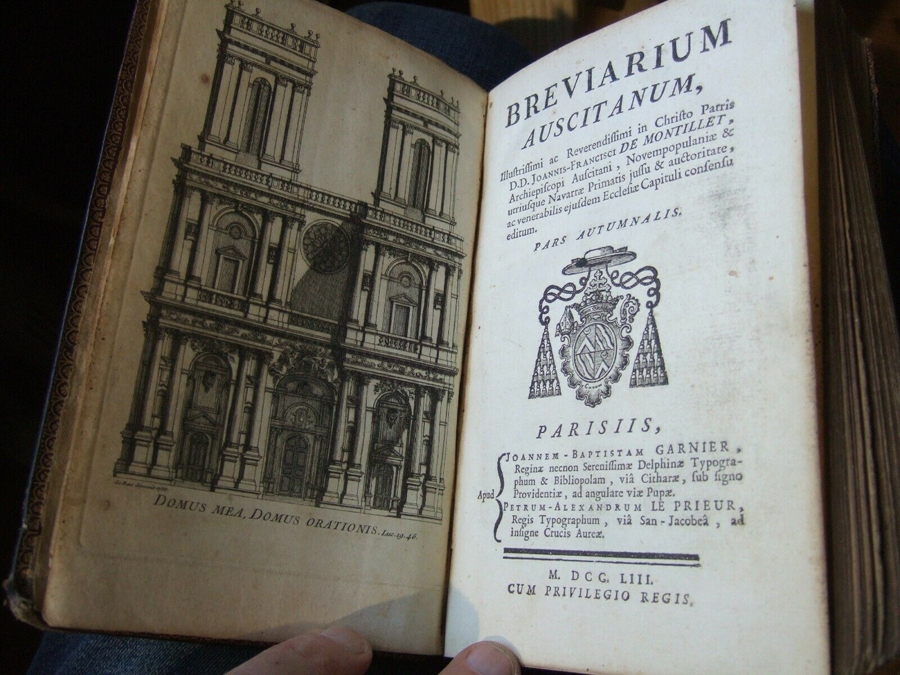
|
I was perhaps the only person on eBay that was excited to see this binding up for bids in April of 2022. I recognized it as being possibly a rare dentelle creation of Louis Douceur, however looking at it more closely I soon realized that it was an even rarer binding by Plumet. In as much as the binding itself was in a poor state of conservation, meant that I might get it cheap as indeed I did. However for my research purposes, this was a great treasure and wonderful opportunity to to at last be able to see Plumet imprints highly magnified and thus identify and catalogue them. Here we have irrefutable proof of what I am about to reveal. Louis Douceur was without doubt one of the most important and prestigious binders of mid 18th century France. His name will stand alongside that of Padeloup and Dubuisson as some of the binders who most influenced the decorative styles of the era. However Douceur's work was so intricately mingled with that of Plumet that almost no one would know the difference. All experts past and present have been confounded by this situation that makes the attribution of bindings that are uniquely by Douceur very difficult. Fortunately Plumet decided to sign some of his work and thus these rare signed bindings serve as a key to sorting out this mystery. A few years back I made a series of pages dedicated to a signed Plumet binding (see this). From this key binding I was able to track down several Plumet bindings, however this only made life more complicated when it comes to understanding who made what. We might imagine that sometime around the middle of the century Louis Douceur had more work than he could handle and decided to hire Plumet to help him out, or perhaps Plumet was his apprentice or perhaps Plumet was a very clever imitator who Douceur decided to employ, what ever the case Plumet decorated bindings with his own tools along with those of Douceur. Thus after this previous Plumet research I was able to see that this eBay binding was almost certainly by Plumet |
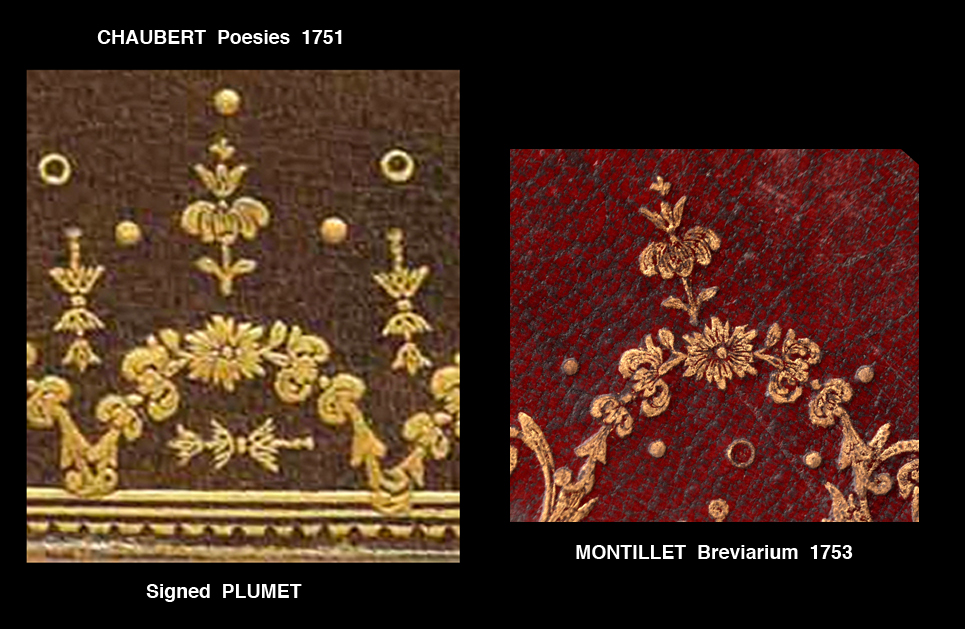
| In Comparative Diagram 1, we see the same imprints that are found on Plumet's signed binding as are found on our eBay example. I should here digress a little about this ebay binding that covers a 1753 Breviarium Auscitanum and bears the arms of Jean-François de Montillet de Grenaud, who was also the author as we can see by the title page which also bears his arms. In this case we might imagine that De Montillet who was at the time Arch Bischop of Auch, would have had his Breviarium copies bound and decorated not long after their printing. Thus we might assume that this decoration of Plumet dates to around 1753, this corresponds well with his signed binding that dates to 1751, and indeed we see some of the same tools used in an identical way. Now in the past, I did not home in on the importance of this, as one can never be too sure of the actual date that bindings have been executed, however if we imagine that Plumet was doing this work when Pierre-Paul Dubuisson was just beginning his important dentelle work as well as Douceur we might have to rethink our ideas as to who was doing what in relationship to decorative styles. Rather than imagining that Plumet was only assisting Douceur, what if Douceur was adopting ideas and tools from the work of Plumet? We do not know. |
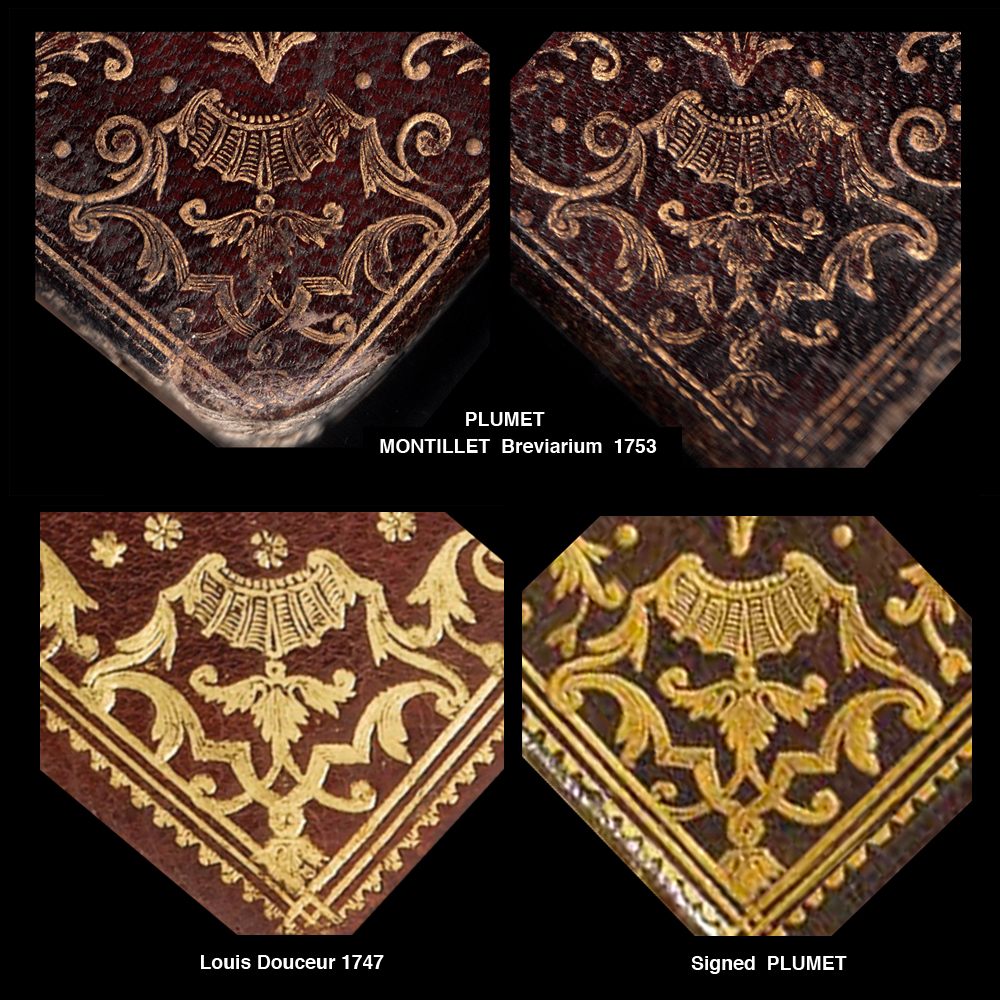
|
In Comparative Diagram 2, we see that the corner tools from our eBay Plumet match those of a 1747 Louis Douceur binding that I have detailed previously (see this)
we know almost certainly that this is a binding by Douceur because of the spine pallet and date. In his 2013 magnum opus PRINTED BOOKS AND BOOKBINDINGS, Giles Barber made a number of attributions that were obviously incorrect. The main reason for his failures in this regard was due to his is method of cataloguing tooled imprints by their shapes rather than by the artists who employed them. In a case that pertains to our investigations here, Barber attributed the binding on W.Cat. 636 to Louis Douceur even though a number of obvious tools were those of Fetil. I have partially detailed this problem previously (see this) (and this for Fetil tool, Barber's DCR 28) however here we will look at Barber's tool DCR 13 which he extracted from W.Cat 636 and therefor according to his attribution of this binding to Louis Douceur must be a Douceur tool right? Well nearly, this tool is so close to that of Douceur that even with magnification it is hard to tell. |
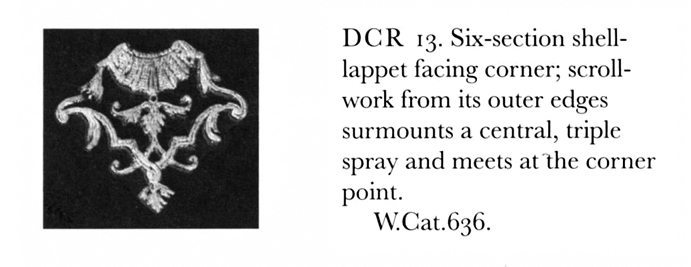
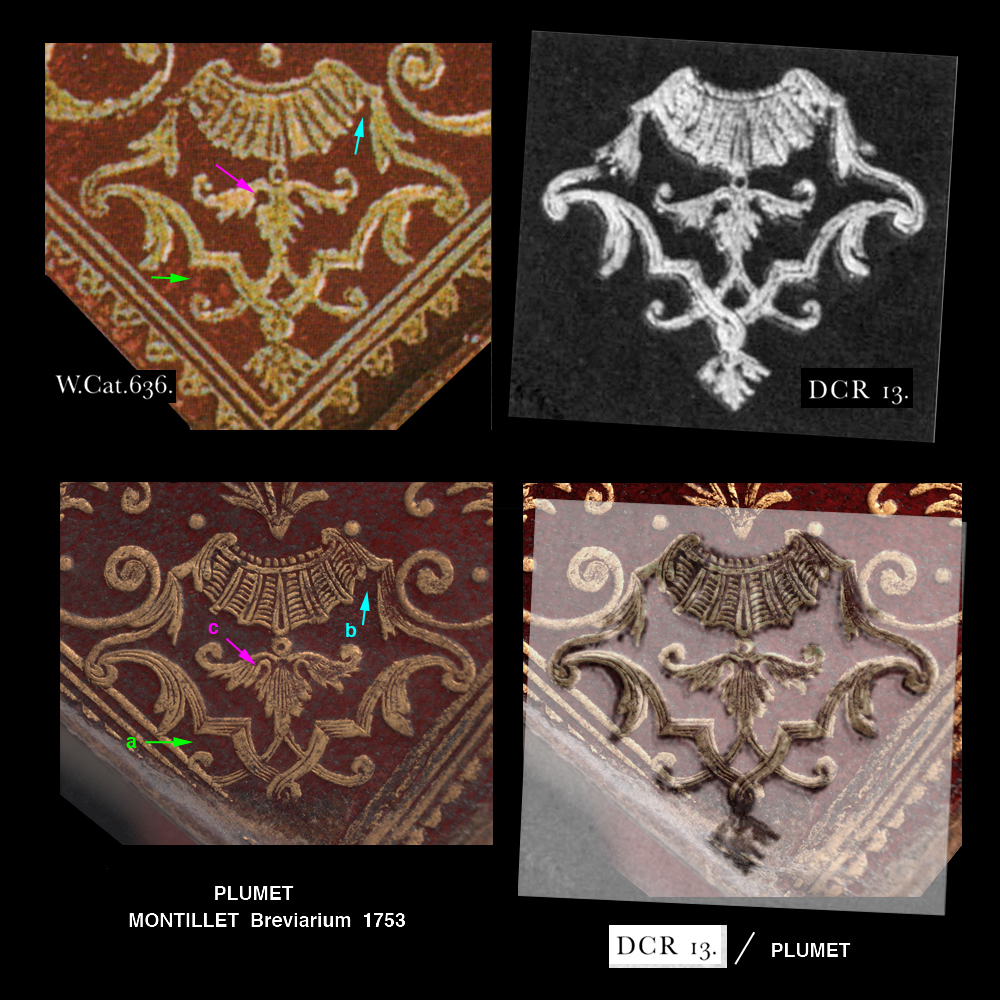
| In Comparative Diagram 4 we see the corner imprint from W.Cat. 636 as well as Barber's tool model DCR 13 taken from W.Cat. 636. compared with a corner imprint from our eBay Plumet. The green arrow (a) indicating a difference in the empty space compared with the W.Cat. 636 corner imprint. The blue arrow (b) indicating that the space here is not the same in these examples, while the mauve arrow (c) is pointing to the difference in this part of the imprints where the waist of the Plumet example is thicker. Generally speaking the Plumet/Douceur tool is of a superior quality, with many details better defined than the Fetil tool (DCR 13), which must be seen as an imitation appearing a full decade later. However without magnification these differences would not be apparent to the casual observer. Consider also the fact that differences in the quality of these imprints could further mask the deception. In this diagram is also included an overlay where the DCR 13 imprint has been inverted to black on white with a 50% opacity and placed over the eBay Plumet corner that is then visible beneath. These imprints have been reproduced at the same scale and they match so closely that even in this overlay their differences are barely noticeable. This kind of indepth look at these imprints reassures us that indeed the Plumet corner tool of this type is the same tool that we see imployed in Louis Douceur bindings presumably by Douceur himself. |
|
click here to see the INDEX of the 2017 pages. click here to return to the HOME page. see below links to previous work |
| Even experts are sometimes wrong, before you spend thousands on a book, please do your own research! Just because I say a certain binding can be attributed to le Maitre isn't any kind of guarantee, don't take my word for it, go a step further and get your own proof. In these pages I have provided you with a way of doing just that. |
| Virtual Bookings, created by L. A. Miller | return to the Home page of VIRTUAL BOOKBINDINGS |